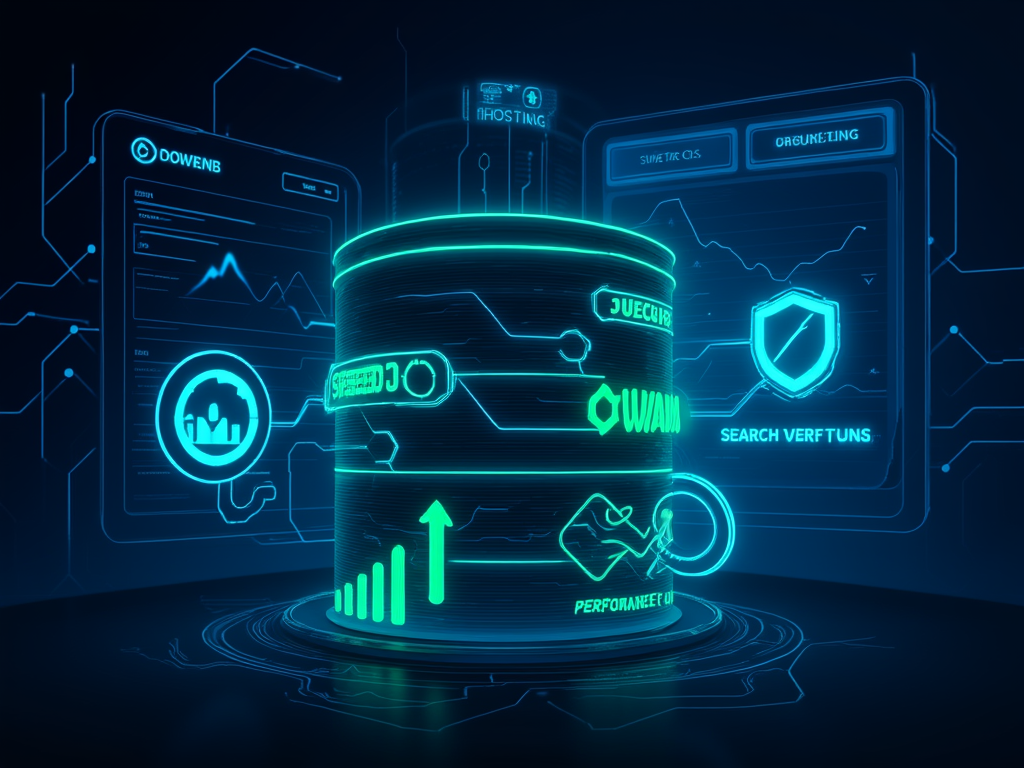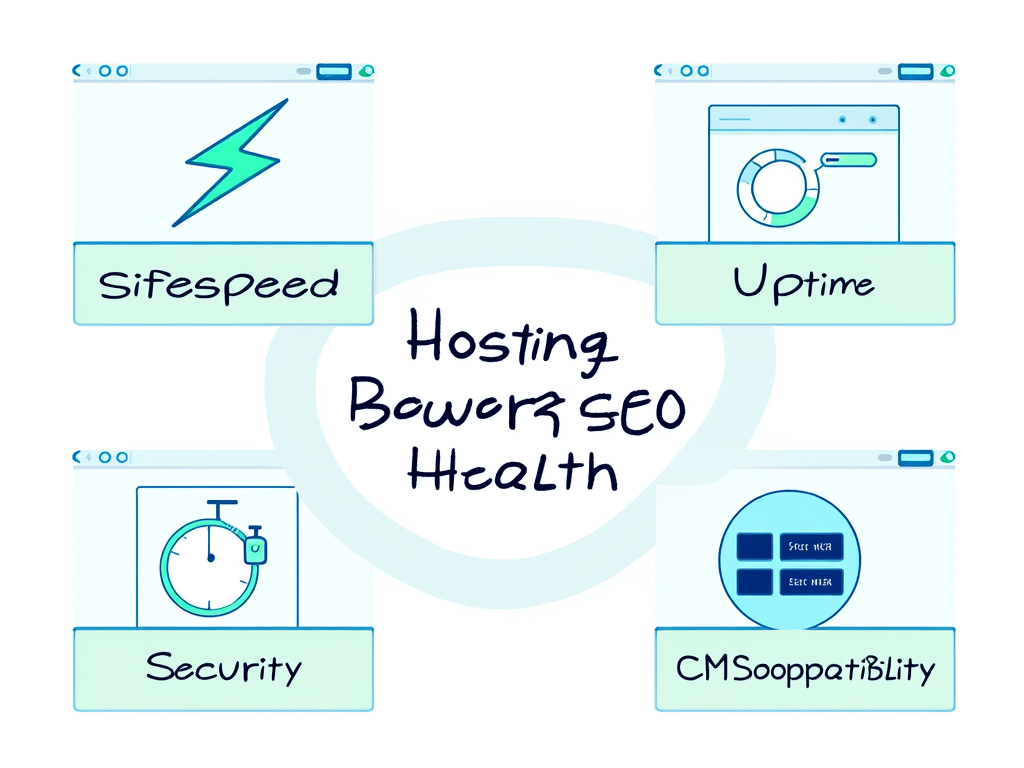მრავალდომენიანი მართვის საუკეთესო პრაქტიკა
მეტა აღწერა:
აღმოაჩინეთ ეფექტური სტრატეგიები და საუკეთესო პრაქტიკა მრავალი დომენის სამართავად, ცენტრალიზებული კონტროლის, თანმიმდევრული ბრენდინგისა და ოპტიმიზირებული უსაფრთხოების უზრუნველსაყოფად სხვადასხვა დომენებში.
შესავალი
ჩვენს ჰიპერდაკავშირებულ სამყაროში კონკურენცია ყოველდღიურად მწვავდება, რაც ნათელ სურათს ქმნის იმისა, თუ რატომ არის ეფექტური დომენების მართვა არა მხოლოდ ფუფუნება, არამედ აუცილებლობა. თქვენ ალბათ გამოგიცდიათ მრავალი დომენის მართვის გამოწვევა, რომელთაგან თითოეული წარმოადგენს თქვენი ბიზნესის ან იდეის ასპექტს და ასახავს მის სასიცოცხლო მნიშვნელობის არსს სხვადასხვა ბაზარზე ან დემოგრაფიულ ჯგუფში. იქნებით თუ არა დამწყები მეწარმე თუ გამოცდილი აღმასრულებელი დირექტორი, მრავალი დომენის მართვამ შეიძლება თქვენი ბრენდი ყურადღების ცენტრში მოაქციოს ან დავიწყებაში ჩააგდოს.
მრავალდომენიანი მენეჯმენტის არსი
მრავალდომენიანი მართვა არ მხოლოდ სხვადასხვა ონლაინ მისამართების თვალყურის დევნებას გულისხმობს; ეს მათი გამოყენებაა თქვენი ისტორიის თანმიმდევრულად მოსაყოლად. ეს ორკესტრის მსგავსია - თითოეული დომენი უკრავს ნოტს, რომელიც უფრო დიდ ჰარმონიას უწყობს ხელს. ფსონები მაღალია; ერთი გამოტოვებული განახლება ან არათანმიმდევრული ბრენდინგი შეიძლება არეულობამდე მიგვიყვანოს, რაც კრიტიკული ვიზიტორებისა და გაყიდვების დაკარგვას დაგიჯდებათ.
ცენტრალიზებული მენეჯმენტი და სტრატეგიული თანხვედრა
წარმოიდგინეთ, რომ უზარმაზარი გემის საჭესთან დგახართ და მღელვარე წყლებში მხოლოდ ერთი კომპასით მიდიხართ. ეს კომპასი სხვა არავინაა, თუ არა... ცენტრალიზებული მართვათქვენი დომენების ერთიანი კონტროლის სისტემის ქვეშ გაერთიანებით, თქვენ მიზანმიმართულად გაუშვებთ გზას.
-
სწორი პლატფორმის არჩევა: ისეთი პლატფორმები, როგორიცაა GoDaddy და Cloudflare, დაგეხმარებათ ქაოსის გამარტივებაში. ისინი გთავაზობენ ფუნქციებს, რომლებიც საშუალებას გაძლევთ მართოთ თქვენი დომენები დიდი რაოდენობით, განახლებები ავტომატურად დაყენებული იყოს და DNS პარამეტრები შეუფერხებლად მუშაობდეს. ეს თავიდან აგაცილებთ იმ რთულ მომენტებს, როდესაც ხვდებით, რომ დომენის ვადა ამოიწურა და თქვენი ბრენდის ონლაინ იდენტობა რისკის ქვეშაა.
-
სტრატეგიული ტრანსფორმაცია: წარმოიდგინეთ თქვენი დომენები, როგორც ციფრული სივრცის უძრავი ქონება. თითოეული მათგანი უნდა ემსახურებოდეს უნიკალურ მიზანს — თქვენი ბრენდის სხვადასხვა რეგიონში დამკვიდრებას ან კონკრეტული მომხმარებლის საჭიროებებზე ორიენტირებულობას. შესაძლებელია არეულობის თავიდან აცილება; წარმოიდგინეთ, რომ გამოუყენებელი დომენის ციფრული უძრავი ქონება უბრალოდ იკავებს ძვირფას ადგილს თქვენს პორტფოლიოში.
-
ბრენდის თანმიმდევრულობა: თქვენს დომენებში თანმიმდევრული ბრენდინგით, თქვენ არა მხოლოდ ვიზუალურ იდენტობას ქმნით, არამედ თქვენი აუდიტორიის ნდობის საფუძველსაც ქმნით. წარმოიდგინეთ მრავალეროვნული ბრენდი, როგორიცაა Coca-Cola; თითოეული ქვეყნის დომენი ვიზუალურად ერთსა და იმავე ენაზე საუბრობს და ამავდროულად ადგილობრივ კულტურას ასახავს. ამ აღიარებას შეუძლია SEO-ს გაძლიერებაც, რაც უფრო ძლიერ ონლაინ ყოფნას უზრუნველყოფს.
მაგალითად, წარმოიდგინეთ გლობალური მოდის საცალო ვაჭრობის კომპანია, რომელიც დიდი ბრიტანეთის, აშშ-სა და აზიის ბაზრებისთვის ცალკეულ ობიექტებს მართავს და ერთიანი ბრენდის ქვეშ გაერთიანებულნი არიან. თითოეული საიტი ყურადღებას ამახვილებს რეგიონული პრეფერენციების დაკმაყოფილებაზე და ამავდროულად, ერთიანი ხმის წარმოჩენაზე.
ტექნიკური კონფიგურაციისა და უსაფრთხოების საუკეთესო პრაქტიკები
მრავალი დომენის დამუშავება მხოლოდ ხილვადობას არ ეხება — ის ასევე ღრმად იკვლევს ტექნიკურ საფუძვლებს და უსაფრთხოების პროტოკოლებს.
-
ქსელური მუშაობის აუცილებელი ელემენტები: ყველა დომენს მყარი ქსელური არქიტექტურა სჭირდება. ეს ჰგავს მაგისტრალის სისტემის შექმნას, სადაც თითოეული დომენი დანიშნულების ადგილია, ხოლო IP მისამართები - გზები, რომლებიც უზრუნველყოფს ტრაფიკის მუდმივ ნაკადს. ეს გააზრებული დაყენება ხელს უშლის კავშირთან დაკავშირებულ თავის ტკივილს.
-
უსაფრთხოებაში ინვესტირება: თქვენი ციფრული ყოფნის გაფართოებასთან ერთად, თითოეული დომენის დაცვა ძლიერი ინსტრუმენტებით გარდაუვალი ხდება. მრავალდომენიანი უსაფრთხოების მართვის სისტემები, როგორიცაა Check Point-ის მიერ შემოთავაზებული, ცენტრალიზებს თქვენს უსაფრთხოების პროტოკოლებს, რაც აადვილებს თქვენი აქტივების მონიტორინგს და საფრთხეებზე რეაგირებას.
-
SSL და DNS მართვა: წარმოიდგინეთ თქვენი ვებსაიტი, როგორც ბიბლიოთეკა. SSL სერთიფიკატები გამაგრებული საკეტების მსგავსია; ისინი არა მხოლოდ იცავენ თქვენი მომხმარებლების მონაცემებს, არამედ სანდოობას სძენენ საძიებო სისტემების თვალში. შეინარჩუნეთ DNS ჩანაწერები მოწესრიგებული და განახლებული, რაც უზრუნველყოფს მომხმარებლის შეუფერხებელ გამოცდილებას.
აქ მოყვანილი ილუსტრაცია იქნება კარგად აწყობილი მექანიზმი, სადაც უსაფრთხოების პოლიტიკა და კონფიგურაციები ერთნაირად გამოიყენება ყველა დომენში, რაც უზრუნველყოფს თანმიმდევრულ მონიტორინგს და ინციდენტებზე სწრაფ რეაგირებას.
ოპერაციული ეფექტურობა და რესურსების ოპტიმიზაცია
მრავალი დომენის მართვისას თითოეული კლავიშის დაჭერა ეფექტურობაზე უნდა მეტყველებდეს.
-
ერთიანი ჰოსტინგის გადაწყვეტილებები: მრავალდომენიანი ჰოსტინგის სერვისების გამოყენება ამარტივებს მართვას, ისევე როგორც დირიჟორი ორკესტრს უძღვება და სხვადასხვა სექციებს ჰარმონიზებს. აქ თქვენ შეგიძლიათ მარტივად მართოთ განახლებები და სარეზერვო ასლები, რითაც თავიდან აიცილებთ სირთულეებს, რომლებმაც შეიძლება ყურადღება გადაიტანოს თქვენი ფოკუსირებული ძალისხმევიდან.
-
ზრდის დაგეგმვა: დაფიქრდით მომავალზე - ფოკუსირდით ჰოსტინგის გადაწყვეტილებებზე, რომლებიც თქვენს საწარმოსთან ერთად იზრდება, თავიდან აიცილეთ ახალ პლატფორმებზე გადასვლის განმეორებითი იმედგაცრუება. თვალყური ადევნეთ რესურსების გამოყენებას, როგორიცაა გამტარუნარიანობა და შესრულების მეტრიკა, რათა თავიდან აიცილოთ ნებისმიერი შეფერხება ან გვერდის ნელი ჩატვირთვა.
-
SEO-ს საუკეთესო პრაქტიკები: სასიცოცხლოდ მნიშვნელოვანია, რომ მრავალი დომენის მართვისას SEO ლანდშაფტს გავითვალისწინოთ. ეფექტური გადამისამართების პრაქტიკა იცავს თქვენს ავტორიტეტს მრავალ პლატფორმაზე დაშლისგან. რადგან დუბლირებული კონტენტი პოტენციურ ხაფანგად იმალება, ჯარიმების თავიდან აცილება აუცილებელია თქვენი ციფრული რეპუტაციის შესანარჩუნებლად.
მაგალითად, მსხვილმა კომპანიამ შეიძლება გადახედოს საერთაშორისო დომენებისადმი მიდგომას და გააერთიანოს ისინი კარგად დაგეგმილ ქვედომენებად ძირითადი დომენის ქვეშ. ამ სტრატეგიას შეუძლია გააუმჯობესოს უსაფრთხოების მართვის პროცესები და გამოყენებადობა, ისევე როგორც მთავარი არქიტექტორი გონივრულად გადააკეთებს გაშლილ ქონებას ჰარმონიულ სტრუქტურად.
უფლებებისა და პოლიტიკის სირთულე
მრავალდომენიანი მართვის შემთხვევაში, სირთულეები მხოლოდ კონფიგურაციითა და უსაფრთხოებით არ შემოიფარგლება; ისინი უფლებებსა და ადგილობრივ პოლიტიკასაც ეხება.
-
ადგილობრივი რეგულაციების ნავიგაცია: თქვენი დომენების მოქმედი სხვადასხვა რეგიონის სამართლებრივი ჩარჩოს გააზრება უზრუნველყოფს შესაბამისობას. თითოეულ ქვეყანას აქვს მონაცემთა დაცვისა და დომენის საკუთრების მარეგულირებელი წესების მთელი რიგი - ყურადღებით გაეცანით ამ საკითხს, რათა თავიდან აიცილოთ გაუთვალისწინებელი სამართლებრივი პრობლემები.
-
ბრენდის მითითებების დაცვა: თქვენი დომენი თქვენი ბრენდის ჟღერადობას ასახავს. დარწმუნდით, რომ თითოეული დომენი იცავს ბრენდის ზოგად მითითებებს, ენიდან და ტონიდან დაწყებული ვიზუალური იდენტობით დამთავრებული. თითოეული საიტი უნდა ეხმიანებოდეს თქვენი ბრენდის არსს, გეოგრაფიული განსხვავების მიუხედავად.
სირთულეების ამ ნაქსოვში ჩნდება წარმატებული მრავალდომენიანი მენეჯმენტის ქსოვილი, რომელიც მოითხოვს ოპერაციებში მოხერხებულობას და ბრენდინგის წინდახედულობას.
ამ ლანდშაფტთან ურთიერთობა უზარმაზარ შესაძლებლობებს ხსნის, ხელს უწყობს ინოვაციას და ზრდის დაპირებას. ისინი, ვინც გააზრებულ მრავალდომენიან მენეჯმენტს იწყებენ, არა მხოლოდ რისკავენ; ისინი ინტერნეტის უზარმაზარ ოკეანეში უფრო უსაფრთხო და თანმიმდევრულ ნარატივს ქმნიან.
FINDDOMAIN.GE (შპს ინტერნეტ სერვისები) ძალიან საინტერესო და სწრაფად განვითარებადი IT კომპანიაა. ძირითადი მიმართულებებია: ვებ-განვითარება, დომენები და ვებ-ჰოსტინგი. ის ასევე სთავაზობს კლიენტებს ძირითად სერვისებთან დაკავშირებულ ქვე-მომსახურებას და აუთსორსინგს.
საუკეთესო შეთავაზებები:
გსურთ შექმნათ თქვენი საკუთარი კომპანიის ვებსაიტი ან შექმნათ თქვენი საკუთარი ონლაინ ბიზნესი ინტერნეტში?
– ვებ ჰოსტინგი
– დომენის რეგისტრაცია
– ვებ-განვითარება
– საიტის შემქმნელი



ავტომატიზაციის საშუალებით ხარვეზის შევსება
ეფექტური მრავალდომენიანი მართვის მრავალ სტრატეგიას შორის, ავტომატიზაციის გამოყენება ტრანსფორმაციულ მიდგომად გამოირჩევა. ავტომატიზაცია არა მხოლოდ ზრდის პროდუქტიულობას, არამედ ამცირებს ადამიანური შეცდომების ზღვარს.
-
დავალებების ავტომატიზაცია: Zapier-ის ან Integromat-ის მსგავსი ინსტრუმენტების გამოყენებას შეუძლია რუტინული ამოცანების ავტომატიზაცია, როგორიცაა DNS ჩანაწერების განახლება, დომენის განახლების მართვა ან მონაცემების სინქრონიზაცია პლატფორმებს შორის. ეს ინსტრუმენტები თქვენი ჩუმი პარტნიორის როლს ასრულებს და ყოველდღიურ საქმეებს უმკლავდება, რათა თქვენ შეძლოთ უფრო დიდ სურათზე ფოკუსირება.
-
მონიტორინგი და შეტყობინებები: დომენის სტატუსების ავტომატური მონიტორინგისა და ვადის გასვლის შესახებ შეტყობინებების დაყენება უზრუნველყოფს, რომ თქვენ პოტენციურ პრობლემებს წინასწარ ადევნებთ თვალყურს. წარმოიდგინეთ, რომ შეტყობინებას იღებთ ყოველთვის, როცა განახლებაა საჭირო. ეს პროაქტიული მიდგომა საშუალებას გაძლევთ, რეაგირება მოახდინოთ მანამ, სანამ პრობლემები თქვენს ფრთხილად შემუშავებულ გეგმებს ჩაშლის.
-
ანგარიშგების ინსტრუმენტები: მომხმარებლის ტრაფიკის, SEO რეიტინგის ან უსაფრთხოების ინციდენტების შესახებ ანგარიშების გენერირების ავტომატიზაცია ზოგავს ძვირფას დროს და ხაზს უსვამს გაუმჯობესების საჭირო სფეროებს. თქვენი დომენის მუშაობის რეგულარული ანალიზი საშუალებას გაძლევთ მიიღოთ ინფორმირებული გადაწყვეტილებები და ეფექტურად შეიმუშაოთ სტრატეგია.
ამ ავტომატიზაციის პროცესების ინტეგრირებით, თქვენ აქტიურად თავიდან აიცილებთ სცენარებს, როდესაც გამოტოვებული დავალება ხელს უშლის თქვენს ოპერაციებს. ეს ჰგავს ფხიზელი მცველის ყოლას, რომელიც თქვენს დომენებს აკონტროლებს და მზადაა, პოტენციური პრობლემის პირველივე ნიშნისთანავე გაგაგებინოთ.
დომენის მუშაობისა და ანალიტიკის შეფასება
ისევე, როგორც პილოტი აფრენამდე ამოწმებს ინსტრუმენტებს, თქვენი სფეროების მუშაობის ანალიზი აუცილებელია მდგრადი წარმატებისთვის. თითოეული სფერო ინდივიდუალურად უნდა იქნას განხილული, რათა შეფასდეს მისი ეფექტურობა და წვლილი თქვენი ძირითადი მიზნების მიღწევაში.
-
ტრაფიკის ანალიზი: Google Analytics-ის მსგავსი ინსტრუმენტები დაგეხმარებათ გააანალიზოთ, თუ რომელი დომენები იზიდავს ვიზიტორებს და რომელი რჩება დავიწყებაში. რეფერალური წყაროების გაგებამ შეიძლება შესაბამისად შეცვალოს თქვენი მარკეტინგული სტრატეგიები. ერთი დომენი იზიდავს მნიშვნელოვან აუდიტორიას სოციალური მედიიდან, ხოლო მეორე უპირატესობას ანიჭებს ორგანულ ძიებებში? ეს ინფორმაცია განსაზღვრავს კონტენტისა და კამპანიის კორექტირებას.
-
ჩართულობის მაჩვენებლები: თვალყური ადევნეთ მომხმარებლის ქცევას სხვადასხვა დომენზე. ისეთი მაჩვენებლები, როგორიცაა ბაუნს რაოდენობები, სესიის ხანგრძლივობა და კონვერტაციის მაჩვენებლები, ჩართულობის კრიტიკული მაჩვენებლებია. თუ დომენი აჩვენებს მაღალ ტრაფიკს, მაგრამ დაბალ კონვერსიას, ეს შეიძლება მიუთითებდეს კონტენტის შესაბამისობასთან ან მომხმარებლის გამოცდილებასთან დაკავშირებულ პრობლემებზე. ამ პრობლემების მოგვარებამ შეიძლება გააუმჯობესოს ინვესტიციის ანაზღაურება (ROI).
-
SEO-ს შესრულება: თქვენი დომენების საძიებო სისტემებში რეიტინგის შეფასება თქვენს ხილვადობაზე წარმოდგენას შეგიქმნით. გამოიყენეთ ისეთი ინსტრუმენტები, როგორიცაა SEMrush ან Ahrefs, საკვანძო სიტყვების ეფექტურობის, ბექლინკების პროფილების და დომენის საერთო ავტორიტეტის დასადგენად. ეს ცოდნა დაგეხმარებათ თქვენი SEO სტრატეგიის დახვეწაში, თქვენი ძალისხმევის ფოკუსირებით მაღალი ხარისხის საკვანძო სიტყვებზე, რომლებიც თქვენს სამიზნე აუდიტორიას მოეწონება.
თითოეული დომენის მუშაობის გაგება თქვენი ციფრული სტრატეგიის სრულ ხედვას ქმნის და ზრდის გზებს ხაზს უსვამს.
გამარტივებული მმართველობის პროცესები
კონტროლის შესანარჩუნებლად სასიცოცხლოდ მნიშვნელოვანია მრავალდომენიანი მართვის ზედამხედველობის მმართველობითი ჩარჩოს შექმნა. ეს მოიცავს თქვენი ორგანიზაციის მასშტაბით პოლიტიკის, პროცედურებისა და პასუხისმგებლობების დადგენას.
-
პოლიტიკის შემუშავება: შეიმუშავეთ ყოვლისმომცველი სახელმძღვანელო პრინციპები, რომლებიც განსაზღვრავს, თუ როგორ უნდა მოხდეს დომენების რეგისტრაცია, მართვა და მოდიფიცირება. მაგალითად, განსაზღვრეთ წვდომის უფლებები იმის შესახებ, თუ ვის შეუძლია დომენების შესყიდვების ან განახლებების ინიცირება. ეს ამცირებს რისკებს და აძლიერებს ანგარიშვალდებულებას თქვენს ორგანიზაციაში.
-
როლების განაწილება: დომენის მართვაში ჩართული დაინტერესებული მხარეებისთვის მკაფიო როლების განაწილება. ეს შეიძლება მოიცავდეს დომენის მენეჯერის დანიშვნას განახლებების ზედამხედველობისთვის, მარკეტინგის სპეციალისტის დანიშვნას ბრენდის თანმიმდევრულობის მონიტორინგისთვის და IT გუნდის დანიშვნას უსაფრთხოების კონფიგურაციების განსახორციელებლად.
-
აუდიტის პრაქტიკა: ჩაატარეთ თქვენი დომენების პორტფელის რეგულარული აუდიტი. შეაფასეთ, კვლავ შეესაბამება თუ არა თქვენი დომენები ბიზნეს სტრატეგიასა და ბაზრის საჭიროებებს. არის თუ არა რაიმე დომენი, რომელიც უნდა გაუქმდეს ან კონსოლიდირებული იყოს? უწყვეტი გაუმჯობესების მიღება უზრუნველყოფს, რომ თქვენი სტრატეგია მოქნილი და აქტუალური დარჩეს.
ამგვარი მმართველობა გუნდებში ჰარმონიას ქმნის და მენეჯმენტის პროცესს აძლიერებს.
ტენდენციების აწმყოში წინსვლა
ციფრული ოპერაციების ლანდშაფტი აგრძელებს განვითარებას. ახალი ინსტრუმენტებისა და პრაქტიკის თვალყურის დევნება გადამწყვეტი მნიშვნელობისაა მრავალი სფეროს ეფექტური მართვისთვის.
-
ახალი ტექნოლოგიების გამოყენება: ყოველთვის იყავით ყურადღებიანი ახალი ინსტრუმენტებისა და ტექნოლოგიების მიმართ, რომლებსაც შეუძლიათ თქვენი მართვის სტრატეგიის გაუმჯობესება. იქნება ეს ხელოვნური ინტელექტით დაფუძნებული ანალიტიკა თუ მოწინავე უსაფრთხოების პროტოკოლები, პიონერობამ შეიძლება გამოგარჩევოთ კონკურენტებისგან.
-
ჩაერთეთ საზოგადოებაში: დომენის მართვასთან დაკავშირებულ ფორუმებში, ვებინარებში ან სემინარებში მონაწილეობა დაგეხმარებათ თქვენი სტრატეგიის განახლებაში. გამოცდილების გაზიარება და ახალი მიდგომების შესწავლა თქვენს პრაქტიკაში ღირებულ იდეებს შემოიტანს.
-
უკუკავშირის მარყუჟები: შექმენით არხი გუნდის წევრებისთვის, რათა მათ დომენის მართვის პროცესებთან დაკავშირებით უკუკავშირი მიაწოდონ. ეს ინფორმაცია ხელს უწყობს ინოვაციების კულტურის ჩამოყალიბებას, რაც საშუალებას აძლევს ინდივიდებს, შესთავაზონ გაუმჯობესებები, რომელთა შეუფერხებლად განხორციელებაც შესაძლებელია.
ამ პრაქტიკის განვითარებასთან ერთად, თქვენი მრავალდომენიანი მენეჯმენტის დინამიკა ადაპტირდება და იცვლება, რაც უზრუნველყოფს მდგრადობას და შესაბამისობას სწრაფი ტემპის გარემოში.
დასკვნითი აზრები
მრავალდომენიანი მართვისადმი ყოვლისმომცველი მიდგომა არა მხოლოდ იცავს თქვენი ბრენდის ციფრულ ყოფნას, არამედ მნიშვნელოვნად აუმჯობესებს ოპერაციულ ეფექტურობას, უსაფრთხოებას და ზრდის პოტენციალს. ინოვაციური ავტომატიზაციის, საფუძვლიანი შესრულების ანალიზის, დეტალური მმართველობისა და პროგრესული აზროვნების გაერთიანებით, თქვენ ქმნით საფუძველს მდგრადი წარმატებისთვის. სწრაფი ცვლილებებით ნიშანდობლივ ეპოქაში, თქვენი სტრატეგია ისეთივე სწრაფად უნდა განვითარდეს, მზად იყოს მომავლისთვის და ამავდროულად უზრუნველყოს, რომ თითოეული დომენი ეფექტურად ემსახურებოდეს თავის მიზანს.
შესაბამისი ვიდეო ბმულები
უფრო მარტივი ნავიგაციისთვის და მეტი ინფორმაციისთვის, იხილეთ ეს ვიდეოები:
მრავალდომენიანი მართვის სტრატეგიების გაგება
თქვენი დომენის მართვის ავტომატიზაცია
დომენის მუშაობის ანალიზის ინსტრუმენტები
თქვენი სტრატეგიის ქსოვილში მდგრადობის გათვალისწინებით, დაფიქრდით, თუ როგორ შეგიძლიათ გააუმჯობესოთ თქვენი მენეჯმენტის მიდგომები, რათა ნამდვილად აყვავდეთ მრავალდომენიან სამყაროში.
საუკეთესო შეთავაზებები:
გსურთ შექმნათ თქვენი საკუთარი კომპანიის ვებსაიტი ან შექმნათ თქვენი საკუთარი ონლაინ ბიზნესი ინტერნეტში?
– ვებ ჰოსტინგი
– დომენის რეგისტრაცია
– ვებ-განვითარება
– საიტის შემქმნელი








